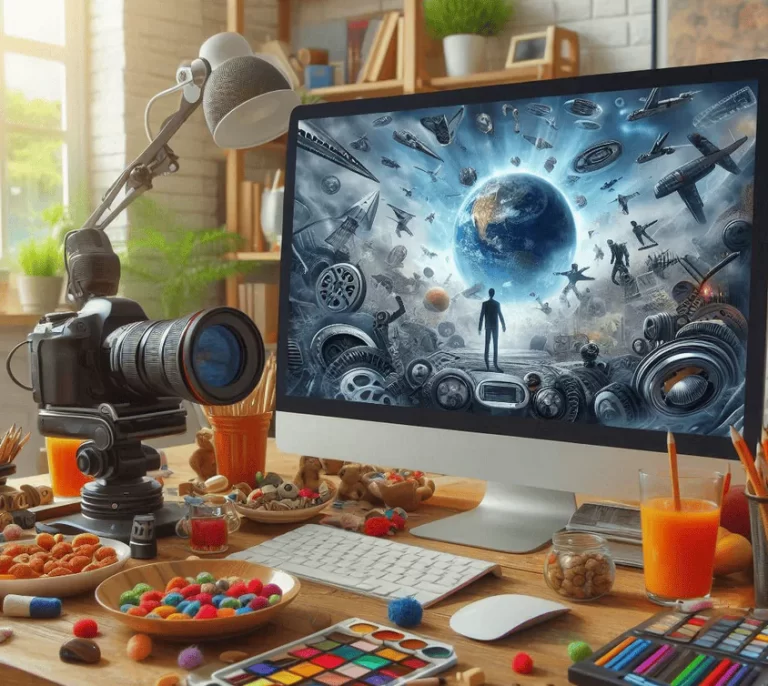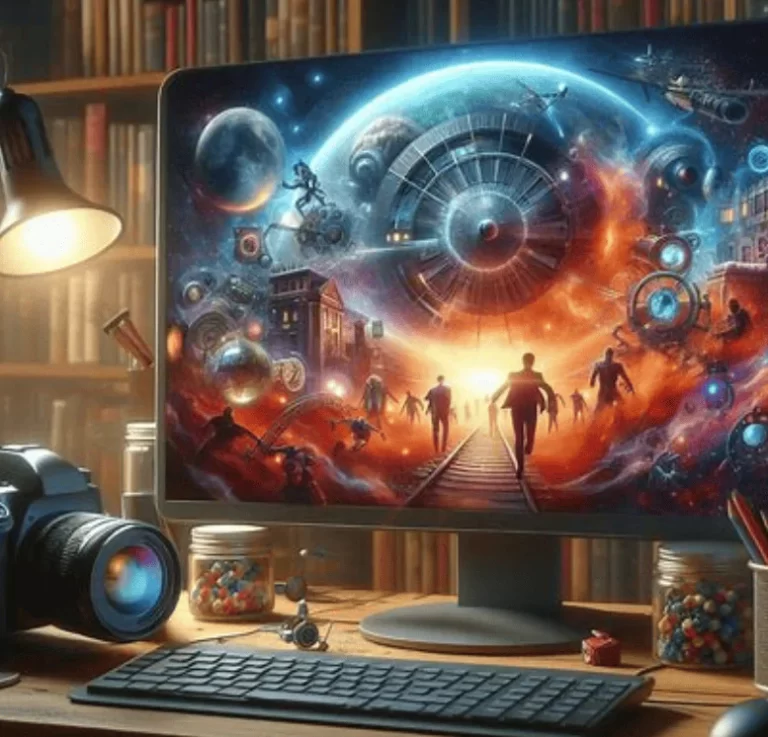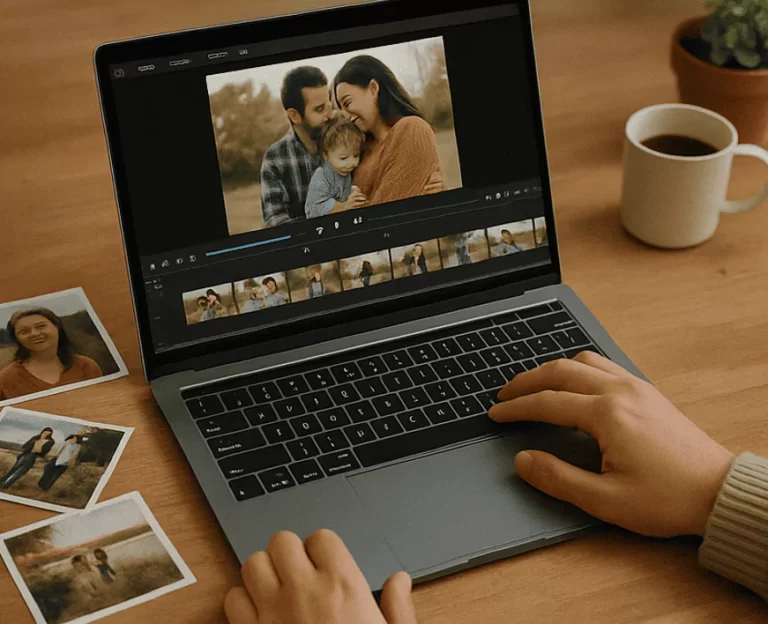
Digital Art Art has always been a reflection of human creativity, values, and aspirations. As the digital era redefines every aspect of our lives, art is no exception. The rise of Digital Art has opened a new frontier for both creators and collectors, presenting unprecedented opportunities to own, invest in, and preserve pieces of cultural significance. For collectors, this burgeoning field represents a convergence of passion, innovation, and financial potential.
In this guide, we’ll delve deep into the world of Digital Art collecting, exploring its origins, its potential as an investment, and how to navigate the complex and ever-evolving digital art market.
Understanding Digital Art
What is Digital Art?
Digital Art refers to artistic works created or presented using digital technology. From dynamic visualizations and algorithm-generated graphics to animations and virtual reality experiences, the medium transcends the boundaries of traditional art forms. Unlike physical artworks, these creations exist as digital files, sometimes accompanied by metadata or certifications that establish their authenticity and ownership.
The Evolution of Digital Art
The journey of Digital Art began in the 1960s, with pioneers experimenting with computer-generated imagery. Over time, advancements in technology expanded the possibilities, enabling artists to harness software, algorithms, and even artificial intelligence as creative tools. Today, the field has evolved into a dynamic and respected art form, embraced by major galleries, museums, and collectors worldwide.
Why Invest in Digital Art?
A New Frontier in Collecting
The appeal of Digital Art lies in its ability to push boundaries and explore uncharted territories. As a collector, you are not just acquiring a piece of art—you are supporting innovation and contributing to the growth of a transformative movement.
Accessibility and Inclusivity
Unlike traditional art, where physical constraints often limit access, Digital Art can be viewed and appreciated anywhere in the world. Platforms like online marketplaces and virtual galleries have democratized the art-buying process, enabling collectors from diverse backgrounds to engage with the medium.
Financial Potential
The digital art market has seen exponential growth, fueled in part by the emergence of blockchain technology and Non-Fungible Tokens (NFTs). These innovations have provided a secure and transparent way to buy, sell, and trade Digital Art, paving the way for a thriving secondary market.
The Role of NFTs in Digital Art Collecting
What are NFTs?
Non-Fungible Tokens (NFTs) are digital certificates of ownership stored on a blockchain. They authenticate and track the provenance of a digital asset, ensuring its originality and uniqueness. For collectors, NFTs address a critical challenge of Digital Art: how to establish ownership of an inherently reproducible medium.
The NFT Boom
The NFT market exploded in 2021, with landmark sales capturing global attention. Beeple’s “Everydays: The First 5000 Days,” sold for $69 million at Christie’s, marked a turning point for Digital Art, legitimizing it as a high-value investment category.
Beyond the Hype
While the NFT frenzy has subsided somewhat, the technology remains a cornerstone of the Digital Art ecosystem. Collectors should view NFTs not just as speculative assets but as a means to support artists and preserve cultural heritage in the digital age.
Building Your Digital Art Collection
Define Your Vision
Every great collection begins with a vision. Are you drawn to specific themes, such as surrealism, abstract forms, or social commentary? Or are you interested in supporting emerging artists working with innovative mediums? Establishing your focus will help guide your acquisitions and build a cohesive portfolio.
Research the Market
The Digital Art market is vast and varied, with countless platforms, artists, and styles to explore. Spend time studying the landscape, identifying trends, and familiarizing yourself with key players.
Engage with Artists
Connecting with artists is one of the most rewarding aspects of collecting Digital Art. Attend virtual exhibitions, participate in online forums, and reach out directly to creators to gain insight into their process and vision.
Consider Provenance and Authenticity
In the digital realm, authenticity is paramount. Ensure that the works you acquire are accompanied by verifiable provenance, such as blockchain certifications or endorsements from reputable galleries.
Navigating the Digital Art Marketplace
Primary vs. Secondary Markets
The primary market involves purchasing Digital Art directly from artists or galleries, often through platforms like Foundation, SuperRare, or ArtStation. The secondary market, on the other hand, involves reselling works through auction houses or peer-to-peer platforms. Both avenues offer unique opportunities and challenges for collectors.
Evaluating Platforms
When buying Digital Art, choose platforms that prioritize transparency, security, and artist equity. Research fees, terms of service, and community reputation before committing to a purchase.
Timing Your Investments
As with any market, timing is critical. While it’s impossible to predict fluctuations with certainty, staying informed about trends and developments can help you make strategic decisions.
Preserving and Displaying Digital Art
Storage Solutions
Unlike physical artworks, Digital Art requires specialized storage solutions to ensure its longevity. Cloud services, external hard drives, and decentralized storage platforms like IPFS (InterPlanetary File System) are popular options for safeguarding your collection.
Display Options
Displaying Digital Art can be as innovative as the medium itself. Digital frames, projectors, and virtual reality setups allow you to showcase your collection in dynamic and engaging ways.
Maintenance and Updates
Keep in mind that digital files may become obsolete as technology evolves. Regularly update your storage formats and consult with tech professionals to ensure your collection remains accessible.
Ethical Considerations in Digital Art Collecting
Supporting Artists
As a collector, you play a crucial role in sustaining the Digital Art ecosystem. Prioritize acquisitions that directly benefit artists and advocate for fair compensation within the marketplace.
Environmental Impact
The energy consumption associated with blockchain technology has raised concerns about its environmental footprint. Consider supporting platforms that implement eco-friendly practices, such as proof-of-stake blockchains or carbon offset programs.
Cultural Sensitivity
Digital Art is a global phenomenon, often drawing from diverse cultural influences. Approach collecting with respect and appreciation for the context and heritage behind each work.
The Future of Digital Art Collecting
Emerging Technologies
The future of Digital Art will be shaped by emerging technologies like artificial intelligence, augmented reality, and quantum computing. These innovations will expand the possibilities for creation and redefine the collector’s experience.
Integration with Traditional Art
As the lines between physical and digital art continue to blur, hybrid exhibitions and phygital (physical-digital) works are likely to gain prominence. Collectors who embrace this intersection will find themselves at the forefront of a new era in art history.
Expanding Accessibility
Advancements in technology and infrastructure will further democratize Digital Art, enabling broader participation and fostering a more inclusive collector community.
Conclusion
Collecting Digital Art is more than an investment; it’s an opportunity to engage with one of the most exciting and transformative movements in contemporary culture. By embracing the medium’s potential, navigating its complexities, and supporting its creators, you can build a collection that not only appreciates in value but also enriches your connection to the art of our time.



